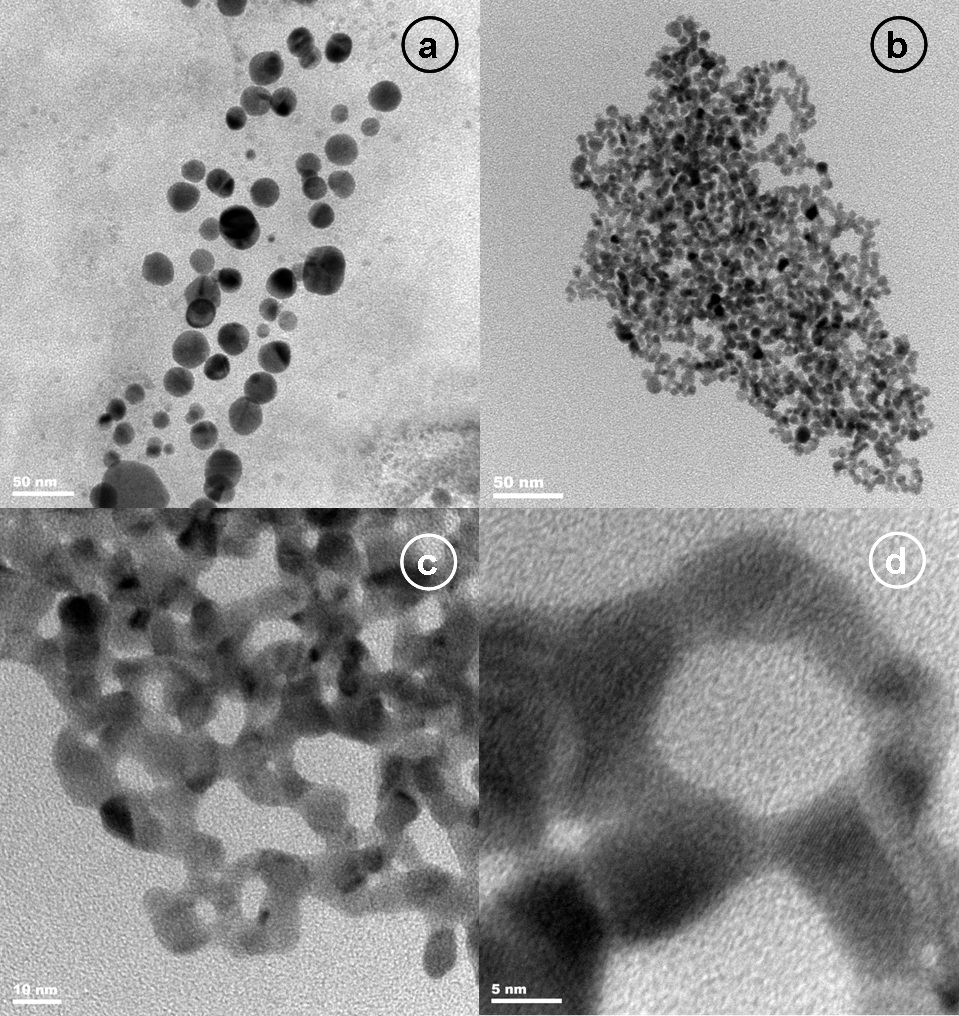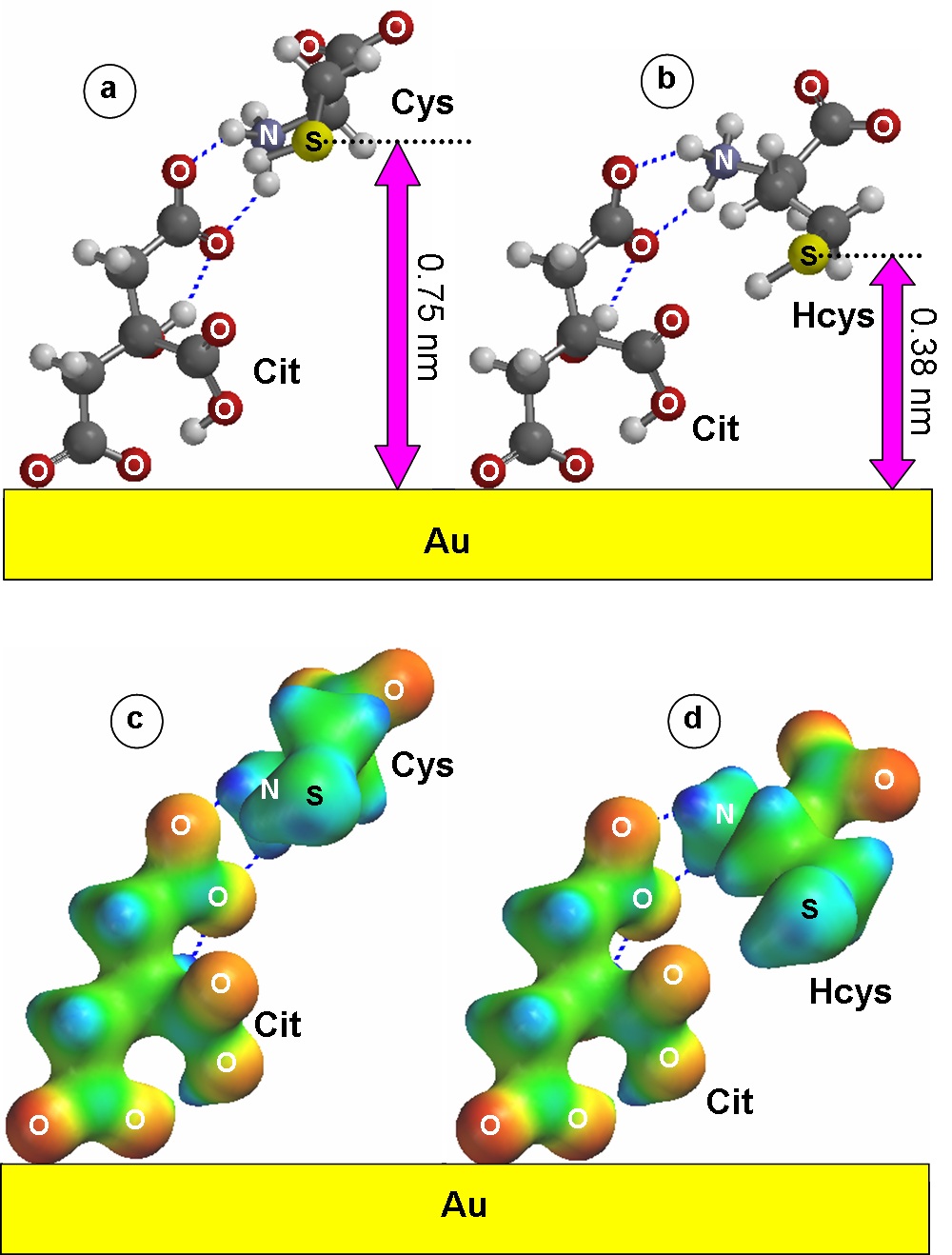5. Ligand Exchange Effects in Gold Nanoparticle Assembly Induced by Oxidative Stress Biomarkers: Homocysteine and Cysteine
Publication:
Magdalena Stobiecka, Jeffrey Deeb, and Maria Hepel, "Ligand Exchange Effects in Gold
Nanoparticle Assembly Induced by Oxidative Stress Biomarkers:
Homocysteine and cysteine"
The interactions of oxidative stress biomarkers: homocysteine (Hcys) and cysteine (Cys) with the multifunctional gold nanoparticles, important in view of novel biomedical applications in diagnostics and therapy, have been investigated using resonance elastic light scattering (RELS), UV-Vis plasmonic spectroscopy, and high-resolution TEM imaging. The Hcys-induced assembly of gold nanoparticles has been observed for non-ionic surfactant-capped gold nanoparticles as well as for negatively-charged citrate-capped gold nanoparticles. We have observed for the first time the de-aggregation of citrate-capped gold nanoparticle ensembles followed by their conversion to citrate-linked Hcys-capped nanoparticle assemblies. The Cys molecules, which are smaller than Hcys by only one CH2 group, show much less activity. The mechanisms leading to this intriguing disparity in the abilities of these two thioaminoacids to ligand exchange with surfactant- or citrate-capping molecules of the gold nanoparticle shells are proposed on the basis of the experimental evidence, molecular dynamics simulations, and quantum mechanical calculations. For citrate-capped gold nanoparticles, we postulate the formation of surface complexes facilitated by electrostatic attractions and formation of double hydrogen bonds for both Hcys and Cys. The conformational differences between these two kinds of complexes result in marked differences in the distance between –SH groups of the biomarkers to the gold surface and different abilities to induce nanoparticle assembly. Analytical implications of these mechanistic differences are discussed.

Figure 1. HR-TEM images of ZONYL-capped gold nsanoparticles before (a) and after assembly with 15 mM homocysteine (b-d); CAuNP = 6 nM, CZONYL = 0.22 %, pH = 6; bar size: (a) 50 nm, (b) 50 nm, (c) 10 nm, (d) 5 nm.

Figure 2. Interactions of cysteine and homocysteine with citrate ions in a ligand exchange process: (a,b) surface complex formation through hydrogen bonding calculated for (a) Cit-Cys and (b) Cit-Hcys using molecular dynamics, and (c,d) electron density surfaces for d = 0.08 au-3, with electrostatic potential map for (c) Cit-Cys and (d) Cit-Hcys; electrostatic potential: color coded from negative - red to positive – blue.